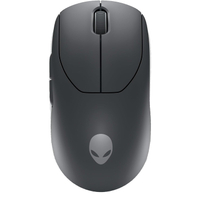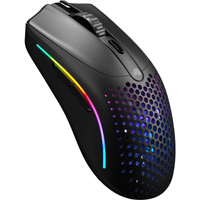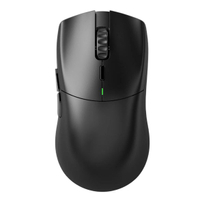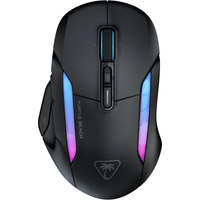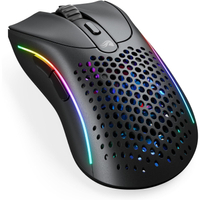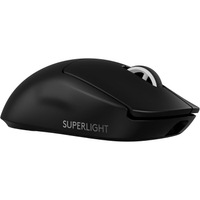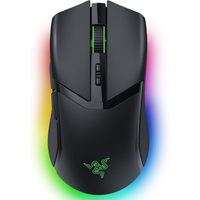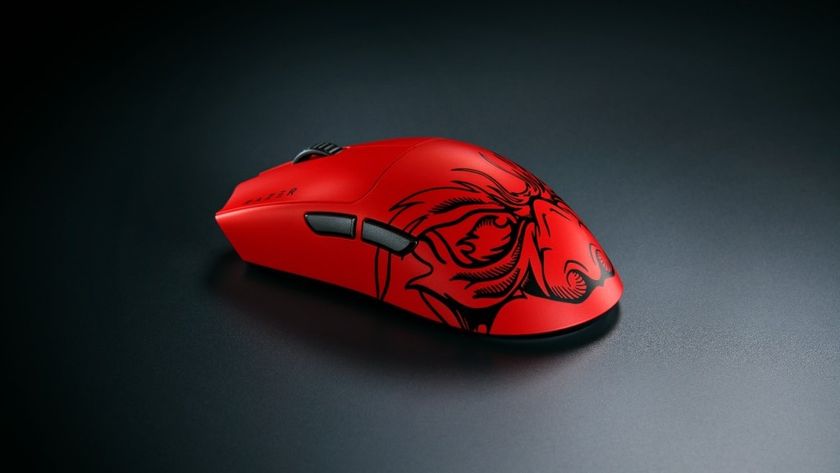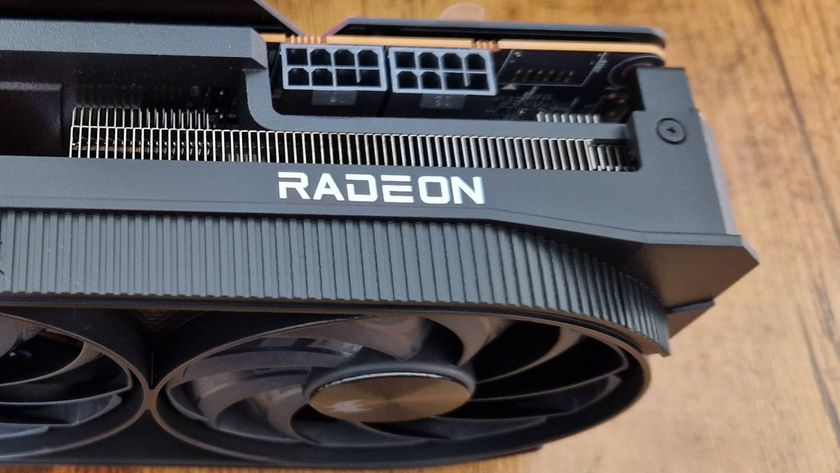The best wireless gaming mouse 2025
We're rounding up all the best wireless gaming mouse options for any budget
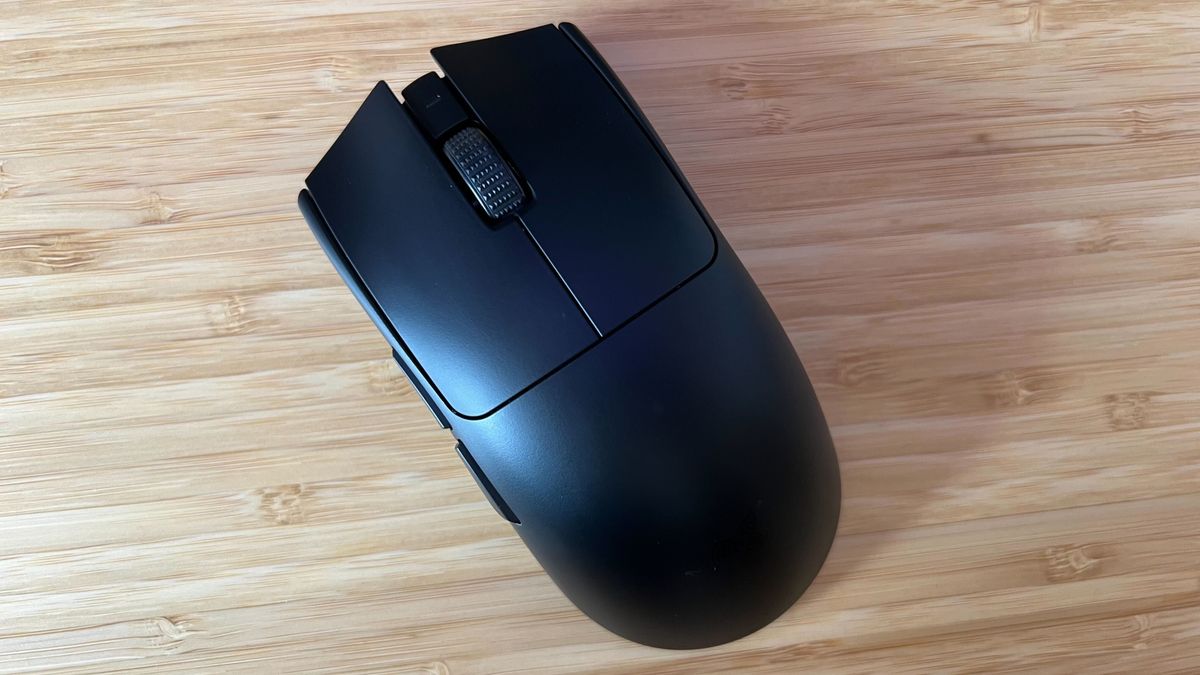
The best wireless gaming mouse models do far more than keep your desk top clutter free. You'll find efficient batteries, bags of programmable buttons, and super speedy sensors among these highest quality pointers, and with the price of such tech dropping more and more, you don't have to break the bank.
Finding the right wireless gaming mouse for you can be tricky, though. With brands like Razer, Corsair, Roccat, and SteelSeries releasing new models all the time, there's a lot of specs and marketing to sort through. I've done all that heavy lifting for you, after countless hours of testing the best gaming mouse models on the market I've gathered the best cordless pointers. Right now, the best wireless gaming mouse is the Razer Viper V3 Pro, with a super speedy sensor and comfortable form factor putting it at the top of the range.
I put these rodents through their paces, treating every device that passes our desks as my own for weeks at a time before making my recommendations. However, I'm not limiting our scope to the three-figure giants. You'll find my favorites from all across the price range here - value for money scores serious points in my eyes.
Just below, you'll find all the best wireless gaming mice available right now, and plenty more information on making the right decision for you further down the page.
The quick list
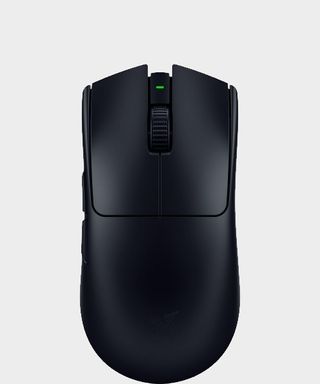
The latest flagship Razer Viper is your go-to for low-weight, high-speed wireless gaming, thanks to its excellent specs and comfortable form factor.
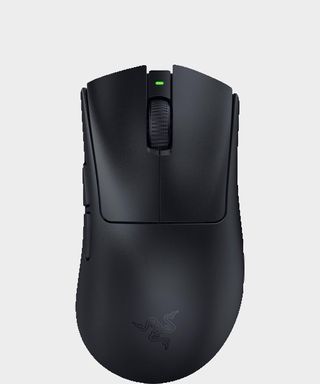
The DeathAdder V3 Hyperspeed packs a lightweight form factor, excellent speed, and fantastic extra features - all for an affordable price tag.
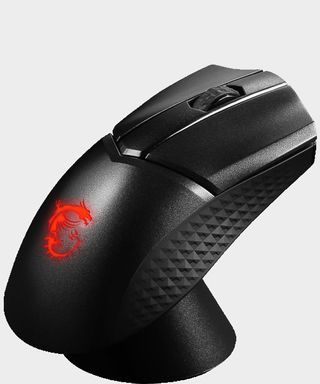
The MSI Clutch GM31 has sailed down the price charts enough to be considered the best budget wireless pointer on the market - and it has a handy charging dock in the box.
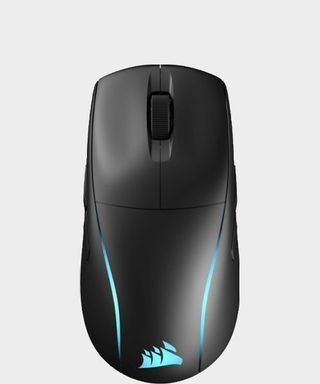
With a set of Corsair switches and a Marksman sensor, as well as swappable side buttons, the Corsair M75 is the best ambidextrous option.
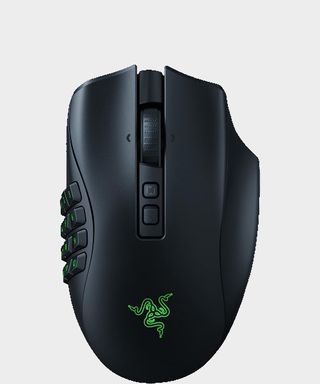
Three swappable side plates mean the Naga V2 Pro can be anything you want it to - all with a slick sensor and excellent connectivity.
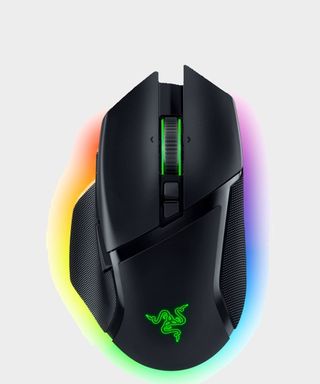
The V3 Pro is a larger pointer with more buttons and a super comfortable design, but it also packs wireless charging functionality.
Load the next 1 product ↓
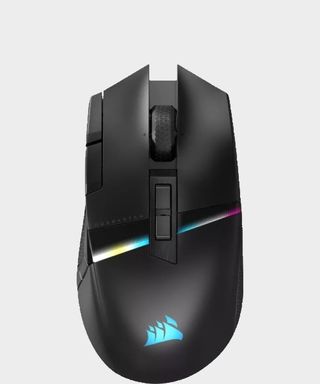
It's got a unique circular array of side buttons, but once you get into the swing of things the Darkstar Wireless is a particularly comfortable MMO pointer.

I've been reviewing gaming mice for 12DOVE for over four years now, first in a freelance capacity before joining the team full-time in 2021. I've had my hands on all shapes and sizes of rodent over those years, testing with a particular focus on comfort, speed, and - above all - value for money.
Recent updates
February 11 - Two new wireless gaming mice have entered the arena this month, as I've finished up my testing of the Glorious Model O 2 Mini Wireless and Alienware Pro Wireless devices. The former went up against the Razer DeathAdder V3 Hyperspeed in the value category, but just missed out due to Razer's extra sensor features and lighter form factor overall. However, it's still well worth investigating if you're looking for a slimline device. Meanwhile, Alienware's tournament-speed pointer went head to head with the Razer Viper V3 Pro for a shot at the top spot, but its lack of wireless 8K polling and sacrifices in its side-button implementation means it doesn't quite nail its competitive target market as well. Both have been added to the Also Tested section further down the page, and I have updated relevant entries with new comparisons.
The best wireless gaming mouse overall






Specifications
Reasons to buy
Reasons to avoid
The Razer Viper V3 Pro has knocked its ancestor off the top spot, taking over from the Viper V2 Pro to become the best wireless gaming mouse on the market right now. How? Through a combination of better ergonomics, a boosted sensor, and a super low weight.
✅ You're a competitive player: If speed is your number one priority then there's no better rodent for you. This thing is super lightweight and packs an incredibly responsive sensor under the hood.
✅ You don't like skinny FPS mice: Gaming mice designed for FPS games have traditionally been much smaller, but the chunkier form factor here remains comfortable for even long sessions.
✅ You want access to 8K HyperPolling: You'll drop a little battery life, but if you want a turbo-charged wireless connection you'll get plenty of use out of the HyperPolling dongle included in the box.
❌ You want easy portability: That 8K dongle is a boost, but it does mean you'll need to take the cable around with you. There's no simple USB receiver here.
❌ You like a smaller mouse: If you prefer a smaller device for easer flick movements and twitch reactions, you might find the V3 Pro a little cumbersome.
Design: Razer has been phasing out its low and flat design of the Viper range over the last few years, first with the Viper V3 Hyperspeed model and now with the full Pro release. The higher dome and more curved form factor of the new model looks pretty much identical to the cheaper Hyperspeed version, with the same matte finish and wider base. That's excellent news for those with larger hands, or those who found the smaller shapes too cramped or uncomfortable.
If you have smaller hands or prefer a fingertip grip, though, it can feel a little more sluggish to maneuver. That said, its indented grooves down the side provide more thumb support than the similar Logitech G Pro X Superlight 2. With a featherlight 54g weight and a simple all-black aesthetic (without any RGBs), the Viper has one thing on its mind - speed.
Features: The Razer Viper V3 Pro ships with the brand's latest Focus Pro 35K optical sensor, technically the fastest and most responsive model the brand has ever shipped - but more of an iterative upgrade than a futuristic change. You're still getting a fantastic 750 IPS tracking speed and plenty of room for more competitive players to dial in their perfect DPI precision but there are a few extra features baked in that don't translate so well. That's a considerable upgrade over 26K sensors still being sold in similarly priced models like the Glorious Series 2 Pro. The sensitivity matcher and the fact that DPI can now be adjusted in increments of one are nice to have, but these features will only be used by those at the top of their game.
Similarly, 8,000Hz polling rates are available straight out of the box here. Again, these will only be used by ultra-competitive gamers, as increased speeds at a casual level aren't going to make much of a difference and the mode does drop your battery life from 95 hours to 17 hours. It's worth noting that wireless 8,000Hz polling is a key separator between the Viper and the similarly priced Alienware Pro Wireless gaming mouse - the latter can only achieve these speeds with a wired connection.
Performance: The Viper V3 Pro is made to fly - it's the fastest wireless gaming mouse I've tested yet and it wears that badge on its sleeve. The difference between the Focus Pro 35K sensor and the previous generation is more subtle in-game, but response does feel snappier in both online competition arenas and slower solo adventures. The main clicks are particularly speedy and much lighter than those of the Glorious Series 2 Pro, with a sweet-spot level of tension underneath. While they're also used in a range of Razer's mice, they feel a little deeper underneath these buttons than they do in something more dense like the Razer Cobra Pro.
Read more: Razer Viper V3 Pro review
| Comfort | ★★★★☆ |
| Speed | ★★★★★ |
| Programmability | ★★★☆☆ |
| Connectivity | ★★★★☆ |
| Battery life | ★★★★☆ |
The best value wireless gaming mouse




Specifications
Reasons to buy
Reasons to avoid
The Razer DeathAdder V3 Hyperspeed is a rare device. Many wireless gaming mice and piling competition-level features into everyday models and charging players for polling rates, high DPI sensors, and accelerations that they just won't need. This one flips the script, offering more casual players a step up in performance they'll actually feel while keeping the price relatively low.
✅ You have a varied library - The DeathAdder range is built for speed, but isn't as laser focused on that goal as the Viper. That means you're still getting the shape and features of a more versatile device.
✅ You like a matte feel - More gaming mice are moving away from the textured days of yore, and if you're on board this is an excellent way to keep up with the trend while keeping that budget light.
✅ You play more casually - If you don't need high-end 8K polling and intricate sensor features, there's no sense in paying for them. The DeathAdder keeps its offerings slimmer, but more tailored to actually noticeable upgrades.
❌ You're a high-level competitive player - If you've got the budget to move up a notch, and the in-game needs to support the purchase, then there are more sophisticated sensors on the market.
❌ You want more grip - The DeathAdder does support grip tape, but its matte finish still won't be enough for those looking for a particularly textured surface.
Design: That's not to say there are too many sacrifices here. In fact, the build quality of the Hyperspeed remains incredibly sturdy. Like newer Viper and DeathAdder models, the V3 Hyperspeed is coated in a soft-touch matte plastic that still manages to feel grippy under the hand. While it can heat up and feel a little clammy during longer sessions, it's a satisfying feel that never creaks or rattles. It's slightly smaller than previous releases, but also manages to maintain a particularly competitive 55g weight - an incredibly light feel for a sub-$100 / £100 device.
Features: That makes finer, more reflex-oriented movements far easier to pull off, but the actual sensor also speeds things up as well. While it doesn't reach the heights of 30K DPI mice, the 26K sensor in here is really all you need. Most players won't move past 6,000 with any regularity. It's the extra features that make a sensor, and with plenty of actually helpful add-ons, the DeathAdder V3 Hyperspeed is more useful than many more expensive options. While similarly priced options, like the Glorious Model O 2 Mini Wireless, offer similarly stripped back feature-sets, the DeathAdder does more to entice everyday players with alternative customization options instead of just removing pricier sensor tricks all together.
Performance: Despite its lower price point, it's important to remember that the DeathAdder V3 Hyperspeed is actually still packed with tech. The high-speed sensor still feels incredibly nimble on the battlefield, with response reporting and impressive tracking across a variety of surfaces. It put up far more of a fight than other sub-$100 wireless gaming mice I've tested in the past, feeling more like a flagship than a budget-friendly alternative under the hands. That's also down to the crisp feel of those optical switches under each main click. While a little heavier than other iterations (and therefore sometimes harder to maintain fast repeat clicks with), they're fast, clean, and particularly tactile.
Verdict: The Razer DeathAdder V3 Hyperspeed turns away from the ultra-competitive crowd to offer players features they will actually use at a price that feels fair. That alone is enough to make it an excellent value gaming mouse, but its performance on the battlefield and comfortable form factor seals the deal.
Read more: Razer DeathAdder V3 Hyperspeed review
| Comfort | ★★★★☆ |
| Speed | ★★★★☆ |
| Programmability | ★★★☆☆ |
| Connectivity | ★★★☆☆ |
| Battery life | ★★★★☆ |
The best budget wireless gaming mouse




Specifications
Reasons to buy
Reasons to avoid
The MSI Clutch GM31 was a little pricier when it first launched, but as it's sailed down the price charts in the last few months it's taken over from the Logitech G305 Lightspeed as the best budget wireless gaming mouse on the market. It's now available for around the same price as Logitech's entry, but with a lower weight and a wireless charging battery.
✅ You don't want to worry about battery - With a wireless charging dock included in the box, you won't have to worry about that charge dying in the middle of a game ever again.
✅ You prefer a skinny form factor - This mouse is modelled around more traditional FPS pointers, which means a slimline design and light profile - geared towards fingertip and claw grips.
✅ You play casually - That sensor isn't going to hold up to more competitive endeavors, but for casual play it's got more than enough juice.
❌ You use a palm grip - If you prefer to keep your hand flat on the mouse, the minute form factor of the MSI Clutch isn't going to feel too comfortable.
❌ You play competitively - The 12,000 DPI and, more importantly, 300 IPS tracking speed can't keep up with more competition-level gaming mice on the market.
Design: This is an FPS mouse through and through, which means you're getting a skinny form factor and smaller frame overall. That's perfect for those who use a fingertip or claw grip, even if its stature is too slim for a full palm hold. This is a slim mouse, but it still manages to retain its comfort thanks to fairly severe grooves in the left flank and a rubberized grip portion towards the bottom as well. The low price point is noticeable in the build materials, with a cheaper plastic construction, but everything still feels solid after a year's worth of use.
Features: Considering you can easily grab the MSI Clutch GM31 for less than $60 / £60 these days, its inclusion of a wireless charging dock feels particularly impressive. The mouse simply slots into the hub at the end of the day and juices up without the need for an extra cable. I have a particularly wire-heavy setup, so not having to tether my mouse in the middle of a workday has been particularly handy. You'd usually spend an extra $50 on top of the mouse price to secure a wireless charging dock for one of Razer's models.
Under the hood, a cheaper PixArt PAW-3310 sensor offers a conservative 12,000 DPI running at a 300 IPS tracking speed. Those are weaker specs than more premium mice, but it should be noted that the majority of casual players will struggle to push too far beyond 6,000 DPI in every day play. I usually have mine set to around 3,800, for example.
Performance: That less powerful sensor does make itself known if you're a particularly speed-focused competitive player, but for everyday action it's more than enough to see you through missions. Its form factor keeps it nippy under the hand, side-buttons are positioned for speed and accuracy, and battery worries are non-existent thanks to that charging hub (though you'll still get up to 110 hours if you're away from home).
Verdict: With its affordable price point, handy wireless charging dock, and slick form factor, the MSI Clutch GM31 is undercutting a lot of the market right now. With a year on the shelves bringing that MSRP down, it's the best budget option available.
Read more: MSI Clutch GM31 review
| Comfort | ★★★☆☆ |
| Speed | ★★★☆☆ |
| Programmability | ★★★☆☆ |
| Connectivity | ★★★☆☆ |
| Battery life | ★★★★★ |
The best ambidextrous wireless gaming mouse





Specifications
Reasons to buy
Reasons to avoid
The Corsair M75 Wireless is one of the more recent releases in the brand's arsenal, and its updated specs mean it takes over from the Logitech G Pro as the best wireless ambidextrous gaming mouse with ease.
✅ You want left-handed versatility: Fewer gaming mice than ever are considering left-handed players these days, which makes Corsair's M75 Wireless a rare gem for those after an ambidextrous design.
✅ You want more connection opportunities: Most wireless gaming mice plug a 2.4GHz receiver in the box and call it a day, but with Bluetooth on board the M75 can connect to a whole host of extra devices, from tablets to handhelds.
✅ You use a palm or claw grip: The wider base and chunkier design means the M75 Wireless is particularly comfortable when held in a palm or claw fashion.
❌ You use a fingertip grip: If you want the full nimble flexibility of a fingertip grip in more competitive scenarios, the wider base and chunkier form factor is going to be a little too heavy to truly be comfortable.
❌ You need more keybindings: Larger mice often come with more buttons to play with, but we've still got a standard two-clicker affair on here (once each side is locked in, the other is cut off in iCue).
Design: The M75 Wireless takes the existing Air model and runs with the same design. This is a very similar humped form factor with a tall body and fairly severe slope down the middle. Being designed for both left and right hands, that's about it in the way of ergonomics, though I did find that gradient to be a little too heavy for a lighter fingertip grip. A palm or claw grip is perfect here, with that rear portion nestling particularly comfortably into the palm, and the wider sides offering plenty of wielding space for the thumb. Corsair has also added two RGB strips to the back end of the device, producing a particularly clean effect with vibrant (and customizable) LEDs.
Features: Like the Logitech G Pro Wireless, the M75 has swappable side buttons on each flank, and also sends you home with slightly raised alternates if you have trouble hitting the flush buttons with ease. It's a bit of a process finding the right buttons for the right side, especially with those extras included, and these are particularly small clickers which means they're not the most accurate to hit in-game.
Still, under the hood, Corsair has kitted the M75 out with its own 26K DPI Marskman sensor running at a speedy 650 IPS which beats Logitech's own 25,600 DPI / 400 IPS model in the G Pro. There's also a nifty trick baked into the hardware side of things here - holding the DPI shifter button and clicking up or down on the side buttons will fine-tune your DPI on the fly. It's a slick process that works flawlessly - and it's so handy I can't believe other wireless gaming mice haven't done it before.
Performance: There's a little extra junk in the trunk here, which means the Corsair M75 doesn't fare as well in competitive FPS games as something like the Razer Viper line. It's only nine grams heavier than the Logitech G Pro Wireless, but there's a little extra drag on movements that's noticeable in faster-paced titles. It still glides beautifully, and tracks the motion with more precision than Logitech's, and remains nippy when it needs to be, striking a solid balance between action and accuracy.
Verdict: Left-handers among us might need something a little lighter (like the older Razer Viper Ultimate) to fly through competitive titles, but the majority of casual players can take advantage of the latest specs and features in the M75 Wireless.
Read more: Corsair M75 Wireless review
| Comfort | ★★★★☆ |
| Speed | ★★★☆☆ |
| Programmability | ★★★☆☆ |
| Connectivity | ★★★★☆ |
| Battery life | ★★★★★ |
The most versatile wireless gaming mouse




Specifications
Reasons to buy
Reasons to avoid
For those who play a lot of different genres, compromises are all-too familiar. You're usually constricted by having too few programmable buttons, or your gameplay becomes sloppy with too many to accidentally hit. That's not so with the Razer Naga V2 Pro.
✅ You play a mix of games - The Naga V2 Pro's secret weapon is those swappable side plates, offering the exact button configuration you need for different genres all in one mouse
✅ You don't like flat mice - This pointer goes in the complete opposite direction of super low, flat designs. It's so chunky it's almost a circle, but it's particularly comfortable as a result.
✅ You don't mind the extra weight - With a sensor that can easily keep up with more demanding tracking, it's just the actual physical weight of the Naga V2 holding it back from more FPS-oriented pursuits.
❌ You play competitive FPS - That chunky form factor gets in the way of speed, so much so that competitive players will need to find something lighter in the hands.
❌ You don't like MMOs - A lot of the customization options on here are geared towards MMO players. If you won't use that extra versatility there are other options on the market that offer better value for money.
Design: The bulbous shape is different from the Razer Viper or DeathAdder's sleek design, and it does take a little getting used to. However, the right flank offers plenty of support to create an extremely comfortable grip overall. It's a heavier mouse than you may have considered before, with a full 134g of body behind it. That means it's too cumbersome to truly feel at home in faster-paced settings, but in an MMO scenario that weight is offset by the extra customization on offer.
Features: You're getting three detachable panels specifically designed for everything from shooters to MMOs. That's a neat feature, but it's the ease with which I can swap these panels that shined through in my testing. Each button layout snaps in with magnets and the Razer Naga V2 Pro itself instantly recognizes which one has been added. The whole process feels incredibly speedy overall, which meant I was hopping between full genre loadouts in just a few seconds.
The real star for me would have to be the 12-button add-on, though. It makes life much, much easier in MMOs that have a wealth of attacks or moves to choose from, and this one puts them within easy reach beneath your thumb. That was all present on the original Naga Pro, though - the V2 adds a turbo-charged 30K sensor, boosted battery life, and a super customizable scroll wheel on top.
Performance: League of Legends, The Witcher 3, and CS:GO (RIP) formed the basis of my original testing, looking to put the pointer to the test across a range of genres and playstyles. More recently, I've been using the Naga across Apex Legends and Fallout 4 as well, and my original concerns surrounding speed and versatility in FPS titles stands true. While the sensor could certainly keep up with faster games, the bulk and shorter shape of the Naga means it drags too much to truly be considered a speedy mouse. However, it performs excellently across other genres. Snappy clicks, low latencies, and a responsive sensor mean the Naga V2 Pro can tackle a fantastic range of use-cases - all with those super tactile buttons at the helm.
Verdict: This is a wireless pointer packed out with features, performance, and reliability, making it one of the best wireless gaming mouse I've had my hands on so far.
Read more: Razer Naga V2 Pro
| Comfort | ★★★★★ |
| Speed | ★★☆☆☆ |
| Programmability | ★★★★★ |
| Connectivity | ★★★★☆ |
| Battery life | ★★★★★ |
The best wireless charging gaming mouse







Specifications
Reasons to buy
Reasons to avoid
The Razer Basilisk V3 Pro is available with the best wireless charging pad available for gaming mice at the moment, the Mouse Dock Pro. While purchased separately, it's much more than a simple charger, and it makes the Pro shine as a result.
✅ You don't want to plug in - We've all been there, half way through a match and suddenly needing to tether up. If you hate the feeling of cable drag, popping the Basilisk on its handy charger every night will mean you never have to plug in again.
✅ You prioritize customization over speed - Larger mice like this are all about adding extra mappable buttons. If you want all your controls directly at your fingertips and don't mind piling some weight on in the process, this is the mouse for you.
✅ You hate fiddly wireless chargers - With a magnetic base, the Razer Mouse Dock Pro allows for a simple drop and charge approach, rather than having to wiggle your mouse into a certain position to start charging.
❌ You only play FPS games - The larger body and heavier weight means this isn't one for those who mainline competitive FPS games, particularly if they play at a higher level online.
❌ You have a strict budget - The Mouse Dock Pro is an extra accessory that doesn't come in the box with the Basilisk V3 Pro. It's well worth it if you can afford it, but if you're working with a smaller budget something like the MSI Clutch GM31 above is going to fit better.
Design: This mouse features the same high-dome design as the cheaper Razer Basilisk V3, with underglow RGB, a generous thumb rest, and an angular aesthetic running across the top. A mixture of textured and glossy plastic keeps this design feeling dynamic without overstepping into gaudy territory - it looks slick on both a desk and tucked up on its charging dock. It's a little heavier than the competition, but is more easily wieldable than the Razer Naga V2 Pro above thanks to the longer shape and extra thumb support. Those factors also make it a more comfortable device overall as well.
Features: The Mouse Dock Pro provides a whole new level of connectivity, allowing for a 2.4GHZ connection without having a USB dongle. It's also a magnetic charger - a completely different format to other models which use pin connectors (like the MSI Clutch further up the page). Rather than having to jiggle the mouse into a sweet spot to start juicing up, it's a simple drop and charge affair.
Of course, this is one of Razer's larger mice, looking to compete with the Logitech G502 X Plus in its 11 button array and comfort-orientated feature set. You do drop two buttons from Logitech's model here, but make up for it with a boosted sensor and that easy charging as well.
Performance: Combining comfort with a high-end sensor, and adding unique extra features into the mix proves to be a winning formula for Razer. The Basilisk V3 Pro feels slick and smooth under the hand, even coming in handy for faster games where the higher weight might have previously held it back. Clicks are snappy and responsive, and all-day comfort is on the cards thanks to that ergonomic shape as well. The charging dock provides a slick 2.4GHz connection while also juicing up quickly and with far less effort than other models.
Verdict: The Razer Basilisk V3 Pro is a higher-priced model, especially when you factor the extra charge for the dock. It's the slickest implementation of wireless charging that we've seen, though, and the actual mouse impresses in its speed, comfort, and customization as well.
Read more: Razer Basilisk V3 Pro and Mouse Dock Pro review
| Comfort | ★★★★★ |
| Speed | ★★★☆☆ |
| Programmability | ★★★★★ |
| Connectivity | ★★★★☆ |
| Battery life | ★★★★☆ |
The best wireless MMO gaming mouse




Specifications
Reasons to buy
Reasons to avoid
The Corsair Darkstar Wireless isn't just the best wireless gaming mouse for MMOs and MOBAs, it's the best option on the market overall.
✅ You want plenty of side buttons: While they take a little getting used to, there's a whole plethora of controls at the tip of your thumb here - and they're far more accurate to hit than the standard 12-button array.
✅ You prioritize grip: There's a fantastic strip of texture running across the Darkstar Wireless, which makes every movement feel tightly controlled.
✅ You want more control options: Beyond those programmable buttons, the reliability of the tilt controls in here makes for a fantastic experience with additional layers of functionality as well.
❌ You don't want to move away from a 12-button layout: If you've been using a dedicated MMO gaming mouse for a long time and don't want to part with the control scheme you've come to know, there are other options on the market.
❌ Battery life is a priority: The Corsair Darkstar Wireless does drop a considerable amount of battery life, so if you don't already charge overnight you'll need to in order to move past a couple days of use.
Design: Its unique design may take some getting used to, but once you've built that muscle memory you're getting all the benefits of a more traditional (and comfortable) mouse shape with the extra functionality of an MMO-designed device. Such a form factor also means the Darkstar Wireless isn't reserved just for MMO use. If you're a genre generalist, you'll be glad to hear that the lighter weight and 26K DPI sensor meant we were able to enjoy more story-led experiences easily.
Features: You're dropping two programmable buttons compared to the Corsair Scimitar RGB Elite, the brand's previous MMO gaming mouse, but we're confident that the majority of players will take the boost in comfort and accuracy overall. Plus, its new tilt features prove incredibly useful once you've got your head around them.
There's a six button array positioned around a grippy textured panel on the left flank. That's fewer than the 12 button array on the Scimitar, but proved to be more than enough inputs for go-to commands and inventory management in our testing (as well as the aforementioned tilt controls).
There are some caveats - especially in the world of the best wireless gaming mice. The battery life taps out at around 20 hours with RGB on, so we only managed around two days of full use before having to plug in.
Performance: We'd take that extra grip any day, it makes for a particularly accurate experience where every move feels both nimble and controlled. There are no accidental presses which often came with larger keypad style MMO mice, and combined with the comfortable dome shape and soft-touch plastic everything feels super snappy. We did find that the rear clickers in this array were a little harder to reach in the heat of the moment but in general this is a solid design.
Verdict: The Corsair Darkstar Wireless is an outlier in the MMO gaming mouse market, but its unique design, slick sensor, and comfortable base means it's the best dedicated pointer I've tested yet.
Read more: Corsair Darkstar Wireless review
| Comfort | ★★★★☆ |
| Speed | ★★★☆☆ |
| Programmability | ★★★★★ |
| Connectivity | ★★★★☆ |
| Battery life | ★★★☆☆ |
Also tested
Alienware Pro Wireless | Available at Amazon
The Alienware Pro Wireless is a premium pointer, and with its 8,000Hz polling rate it's fully aimed at professional esports players. Unfortunately its boxy design, hollow-feeling side buttons, and lack of wireless 8K polling mean it lags behind the Razer Viper V3 Pro in this arena - though it has particularly snappy main clicks up top and a super smooth glide beneath.
Glorious Model O 2 Mini Wireless | Available at Amazon
I really loved the Glorious Model O 2 Mini Wireless during testing - so much so it's stayed out of the cupboard and on my desk for use in-between new models. However, at $99.99 it doesn't offer quite as much value for money as the Razer DeathAdder V3 Hyperspeed, even if it's better suited for smaller hands overall.
Glorious Series 2 Pro | Available at Amazon
The Glorious Series 2 Pro isn't the most expensive wireless mouse on the market, but it doesn't do enough to take most competitive players away from flagships like the Razer Viper V3 Pro. Its sensor is slightly lacking in this top-end range and the main click switches can feel a little too heavy.
Turtle Beach Kone II Air | Available at Amazon
The Turtle Beach Kone II Air is a particularly large wireless mouse with a flat shape designed to accommodate larger hands in a palm grip. It's got a solid battery life and a speedy sensor under the hood, though, which means it's a great alternative for those looking for a more comfortable experience.
Read more: Turtle Beach Kone II Air review
Glorious Model D 2 Wireless | Available at Amazon
The Glorious Model D 2 Wireless is another value-packed mouse going up against the Razer DeathAdder V3 Hyperspeed. Its honecomb design won't be for everyone, though, and it doesn't feel as well-built in the hands.
Read more: Glorious Model D 2 Wireless review
Logitech G Pro X Superlight 2 | Available at Amazon
With a similar form factor and power level as the Razer Viper V3 Pro, the Logitech G Pro X Superlight 2 is another high-end FPS mouse looking to secure the top spot on this list. While it's certainly speedy, the rubber cable and lack of onboard DPI controls mean it falls short.
Read more: Logitech G Pro X Superlight 2 review
Razer Viper V3 Hyperspeed | Available at Amazon
The Viper V3 Hyperspeed goes up against the DeathAdder V3 Hyperspeed in the value category, but doesn't quite nail its FPS-first use-case enough with a lower price tag, especially due to those heavier main clicks.
Read more: Razer Viper V3 Hyperspeed review
Razer Cobra Pro | Available at Amazon
This is a tricky one for me, because I love the Cobra Pro and use it whenever I'm not testing another mouse. However, its battery life has proven difficult to justify over the last few months and its jack of all trades nature means it doesn't exactly master any.
Read more: Razer Cobra Pro review
How we test wireless gaming mice

Every wireless gaming mouse that passes our desks follows the same set of testing procedures. We take each gaming mouse in and treat it as our own; living, working, and playing with them over a considerable period of time before making our recommendations.
Weight, ergonomics, button placement, and build quality are all thoroughly examined as we test the individual designs of each wireless gaming mouse. That means we use each pointer in each of the three main grip types; palm, claw, and fingertip, across a range of genres (always including FPS and MMO games). This gives us a clear indication of how a mouse was designed to be held, but beyond that we're assessing whether the shape holds up under longer play sessions and how well the materials support this kind of endurance run as well. We test for key points of weakness, squeezing the sides of a mouse to check for creaking, shaking to check for rattle, and pushing at the rear panel to make sure there's no flex in the main chassis.
The biggest durability test, though, comes over time. We use these mice for at least two weeks of work and play (and often more), which equates to at least 120 hours of testing before writing up our reviews. In this time, we can generally tell when mouse clicks are softening up or becoming less tight, and whether side buttons are losing their snap. Beyond our initial reviewing process, each wireless mouse continues to sit in our rosters to test long term durability concerns as well.
We always test all available features from both a software and hardware standpoint. That will likely change mouse to mouse, but there are a few standouts that we examine thoroughly during every review. Sensor accuracy, acceleration, latency, debounce, and lift-off distances, are all tested in fast-paced titles like CS:2 (and previously CS:GO for older reviews) and Apex Legends. Programmable button binding, reliability, accuracy, and comfort are further tested in more macro heavy games - the current testing roster is Fallout 4, Assassin's Creed: Odyssey, and Starfield.
Of course, we're keeping a much closer eye on connection stability, battery life and weight with a wireless gaming mouse. At the start of every reviewing period, we charge the device to its max, and run it fully down to the ground. We're not only measuring the length of the battery life here, but also watching out for any performance stutters as that battery enters its final 10%.
You can find out more about how we test gaming mice, but we're also providing more detail on how we make all our recommendations in our dedicated 12DOVE Hardware Policy.
How to choose a wireless gaming mouse
Why you can trust 12DOVE
The best wireless gaming mouse will first of all offer the option for a 2.4GHz connection. Rather than relying on a slower Bluetooth wireless connection to your PC, wireless gaming mice that use USB-A 2.4GHz dongles to link up are far more reliable and can transmit information at a much faster rate. That means you can be more precise and move across the screen much smoother.
Next up, you'll want to make sure that you're getting a decent battery life. At the bare minimum, we would expect a solid wireless gaming mouse to offer a 50 hour battery, but you can find batteries offering up to 400 hours of juice these days. The bigger the battery, the less you'll need to tether up your pointer.
Finally, the best wireless gaming mouse should also feel comfortable to use. Of course, the wireless connection inherent here is going to make wider sweeps a little more ergonomic (there's no drag of a cable to deal with), however making sure that the additional battery and connection tech under the hood doesn't weigh down your device is going to be important. We generally see wireless gaming mice coming in at around 100g, though you will find some outliers that go substantially above or below that goal.
FAQ
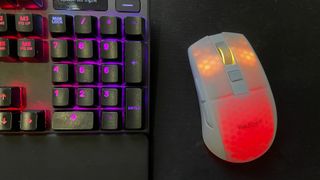
Do wireless gaming mice have lag?
Even the best wireless gaming mouse, traditionally, lagged behind its tethered counterparts. Early wireless connections were substantially slower, leaving wireless pointers out of play when it came to faster game genres. However, that gap has narrowed considerably in the years since, to the point where everyday players won't notice a difference between a wired device and a cable running across their desks. If you're looking to hit every frame with super-speed in a more competitive setting, though, you may notice a slightly longer response time.
Are wireless gaming mice good for gaming?
In short, yes. Wireless gaming mice these days can achieve the same low latency speeds as wired options with very little difference between the performance of the two. While you’re getting the luxury untethered experience, though, there are some extra costs to consider.
Even the best wireless gaming mouse brands couldn’t match wired pointers in speed and latency even a few years ago. However, since then we’ve seen wireless devices leaping forwards in their connection tech. With the arrival of 2.4GHz connections and extremely high polling rates, wireless gaming mice can now hold up to their tethered counterparts.
However, wired options still come in much cheaper. You’re still paying a slight premium to pick up a wireless gaming mouse. You can pick up the same features and specs on a mouse with a cable for a far lower price, which means it’s well worth considering if that untethered experience is worth the extra funds. A truly cheap gaming mouse will generally be a wired one.
There are features that justify that extra cost. A wireless gaming mouse is far easier to travel with, offers a cleaner experience with no cables cluttering up your desktop, and is more versatile in its use - you don’t need to sit right next to your PC.
If you're hunting for the ultimate PC gaming setup, we've got more than a few suggestions. Take a look at our list of guides below for recommendations on everything from the best gaming laptops to the best gaming chairs, or take a look at the best gaming PC options for something a little more permanent.
If you're after more equipment, we're also rounding up the best gaming monitors and the best gaming headsets to boot.
Sign up to the 12DOVE Newsletter
Weekly digests, tales from the communities you love, and more

Managing Editor of Hardware at 12DOVE, I originally landed in hardware at our sister site TechRadar before moving over to GamesRadar. In between, I've written for Tom’s Guide, Wireframe, The Indie Game Website and That Video Game Blog, covering everything from the PS5 launch to the Apple Pencil. Now, i'm focused on Nintendo Switch, gaming laptops (and the keyboards, headsets and mice that come with them), PS5, and trying to find the perfect projector.
Most Popular





